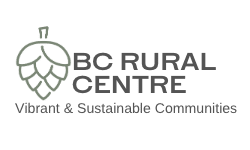
Building Local Food Systems: A Path to Food Sovereignty
In today’s fast-paced, globalized world, the importance of building resilient and sustainable local food systems cannot be overstated. This is particularly crucial in rural, remote, and First Nation communities, where geographical isolation and limited access to mainstream markets often pose significant challenges to food access. However, by embracing the concept of food sovereignty and taking a proactive approach toward local food production, communities can reclaim control over their food sources, promote economic development, and foster a sense of empowerment and self-reliance.
The Power of Food Sovereignty:
Food sovereignty is the right of individuals and communities to define their own food and agriculture systems. It emphasizes local control and decision-making in shaping sustainable, culturally appropriate, and environmentally sound food systems. By adopting food sovereignty as a guiding principle, rural, remote, and First Nation communities can break free from the heavy reliance on distant food sources.
Overcoming Challenges:
Building local food systems in rural communities often involves overcoming unique challenges – from geographic isolation, limited transportation infrastructure, and harsh climates. However, these challenges can also serve as opportunities. By leveraging traditional and local knowledge, adapting farming techniques to local conditions, and exploring innovative solutions like vertical farms, small-scale meat production, land matching, or co-op gardens, these communities can thrive as food sheds, despite their circumstances.
Empowering Rural Communities:
Building local food systems goes beyond mere sustenance; it empowers communities in multiple ways. It creates opportunities for local employment and entrepreneurship, reducing dependence on external economies. By encouraging traditional, sustainable, and regenerative agricultural practices, communities can not only preserve their access to year-round food but they can ensure access for future generations. Additionally, local food systems foster community engagement, cooperation, and social cohesion, strengthening the fabric of these rural communities. We all know the folk story of Stone Soup.
Partnerships and Collaboration:
Like most things in rural areas, establishing a robust local food system requires partnerships and collaboration. Community members can work together with local governments, non-profit organizations, and educational institutions to access funding, technical assistance, and training opportunities. Engaging with neighbouring communities and sharing best practices can also lead to knowledge exchange and collective problem-solving, enhancing the overall resilience of the region. Learning from the experiences of our rural neighbours is key.
When we bring awareness and education to the need to build local food systems in rural, remote, and First Nation communities we are embarking on an empowering and transformative process. By embracing food sovereignty, overcoming unique challenges, fostering partnerships, and promoting awareness, these communities can strengthen local economies, enhance the quality of life, and in some instances preserve their cultural heritage.
The journey for food sovereignty is a path towards empowerment, resilience, and sustainable development, ensuring a brighter (and well-fed) future for generations to come.
At the upcoming Keeping it Rural Conference we are having this dialogue with a panel of key players in the world of rural agriculture. Young Agrarians, Land Matcher, Food Hubs, Boundary Community Ventures, Small-Scale Meat Producers, and an agriculture business advisor – along with our own Judy Wilson who has vast knowledge to share on this topic.
